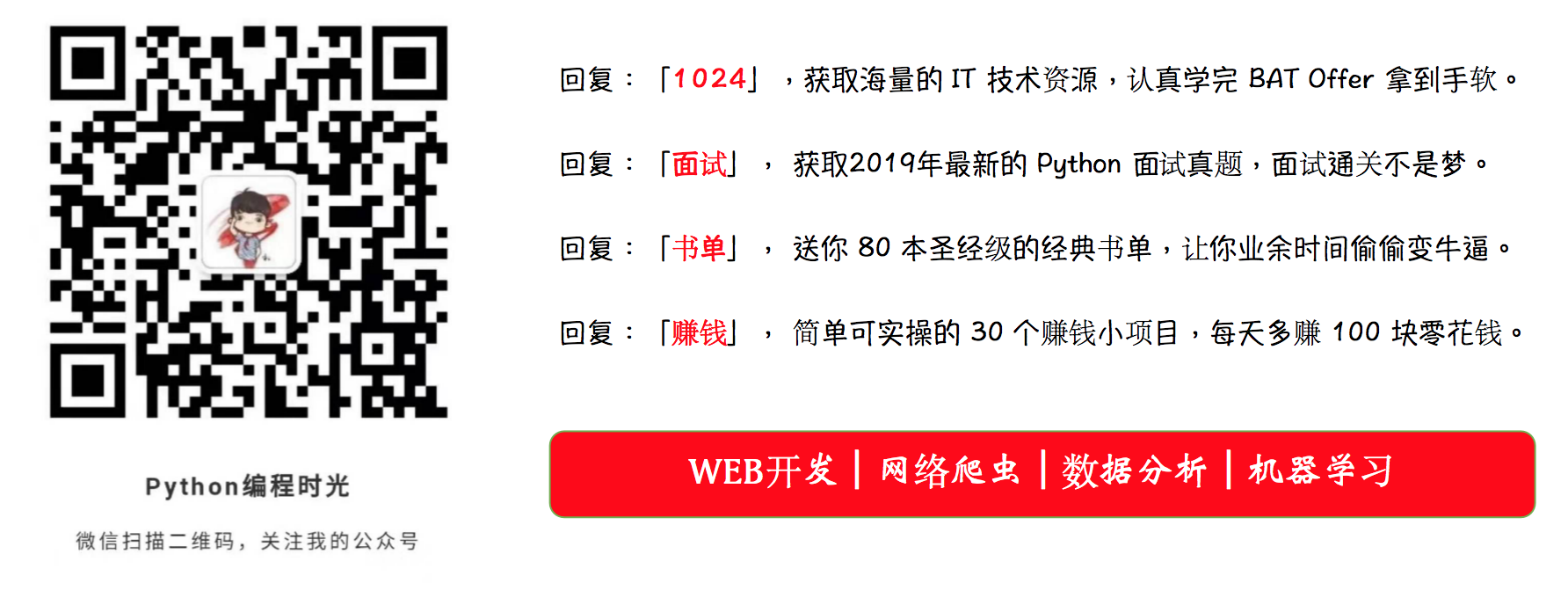Python并发编程之消息队列补充及如何创建线程池(六)
大家好,并发编程 进入第六篇。
在第四章,讲消息通信时,我们学到了Queue消息队列的一些基本使用。昨天我在准备如何创建线程池这一章节的时候,发现对Queue消息队列的讲解有一些遗漏的知识点,而这些知识点,也并不是无关紧要的,所以在今天的章节里,我要先对Queue先做一些补充以防大家对消息队列有一些知识盲区。
再次提醒:
本系列所有的代码均在Python3下编写,也建议大家尽快投入到Python3的怀抱中来。
本文目录
- 消息队列的先进先出
- 创建多线程的两种方式
. 消息队列的先进先出
首先,要告诉大家的事,消息队列可不是只有queue.Queue这一个类,除它之外,还有queue.LifoQueue和queue.PriorityQueue这两个类。
从名字上,对于他们之间的区别,你大概也能猜到一二吧。
queue.Queue:先进先出队列queue.LifoQueue:后进先出队列queue.PriorityQueue:优先级队列
先来看看,我们的老朋友,queue.Queue。
所谓的先进先出(FIFO,First in First Out),就是先进入队列的消息,将优先被消费。
这和我们日常排队买菜是一样的,先排队的人肯定是先买到菜。
用代码来说明一下
import queue
q = queue.Queue()
for i in range(5):
q.put(i)
while not q.empty():
print q.get()
看看输出,符合我们先进先出的预期。存入队列的顺序是01234,被消费的顺序也是01234。
0
1
2
3
4
再来看看Queue.LifoQueue,后进先出,就是后进入消息队列的,将优先被消费。
这和我们羽毛球筒是一样的,最后放进羽毛球筒的球,会被第一个取出使用。
用代码来看下
import queue
q = queue.LifoQueue()
for i in range(5):
q.put(i)
while not q.empty():
print q.get()
来看看输出,符合我们后进后出的预期。存入队列的顺序是01234,被消费的顺序也是43210。
4
3
2
1
0
最后来看看Queue.PriorityQueue,优先级队列。
这和我们日常生活中的会员机制有些类似,办了金卡的人比银卡的服务优先,办了银卡的人比不办卡的人服务优先。
来用代码看一下
from queue import PriorityQueue
# 重新定义一个类,继承自PriorityQueue
class MyPriorityQueue(PriorityQueue):
def __init__(self):
PriorityQueue.__init__(self)
self.counter = 0
def put(self, item, priority):
PriorityQueue.put(self, (priority, self.counter, item))
self.counter += 1
def get(self, *args, **kwargs):
_, _, item = PriorityQueue.get(self, *args, **kwargs)
return item
queue = MyPriorityQueue()
queue.put('item2', 2)
queue.put('item5', 5)
queue.put('item3', 3)
queue.put('item4', 4)
queue.put('item1', 1)
while True:
print(queue.get())
来看看输出,符合我们的预期。我们存入入队列的顺序是25341,对应的优先级也是25341,可是被消费的顺序丝毫不受传入顺序的影响,而是根据指定的优先级来消费。
item1
item2
item3
item4
item5
. 创建多线程的两种方式
在使用多线程处理任务时也不是线程越多越好,由于在切换线程的时候,需要切换上下文环境,依然会造成cpu的大量开销。为解决这个问题,线程池的概念被提出来了。预先创建好一个较为优化的数量的线程,让过来的任务立刻能够使用,就形成了线程池。
在Python3中,创建线程池是通过concurrent.futures函数库中的ThreadPoolExecutor类来实现的。
import time
import threading
from concurrent.futures import ThreadPoolExecutor
def target():
for i in range(5):
print('running thread-{}:{}'.format(threading.get_ident(), i))
time.sleep(1)
#: 生成线程池最大线程为5个
pool = ThreadPoolExecutor(5)
for i in range(100):
pool.submit(target) # 往线程中提交,并运行
从结果来看,前面设置线程池最大线程数5个,有生效。
running thread-11308:0
running thread-12504:0
running thread-5656:0
running thread-12640:0
running thread-7948:0
running thread-11308:1
running thread-5656:1
running thread-7948:1
running thread-12640:1
running thread-12504:1
...
...
除了使用上述第三方模块的方法之外,我们还可以自己结合前面所学的消息队列来自定义线程池。
这里我们就使用queue来实现一个上面同样效果的例子,大家感受一下。
import time
import threading
from queue import Queue
def target(q):
while True:
msg = q.get()
for i in range(5):
print('running thread-{}:{}'.format(threading.get_ident(), i))
time.sleep(1)
def pool(workers,queue):
for n in range(workers):
t = threading.Thread(target=target, args=(queue,))
t.daemon = True
t.start()
queue = Queue()
# 创建一个线程池:并设置线程数为5
pool(5, queue)
for i in range(100):
queue.put("start")
# 消息都被消费才能结束
queue.join()
输出是和上面是完全一样的效果
running thread-11308:0
running thread-12504:0
running thread-5656:0
running thread-12640:0
running thread-7948:0
running thread-11308:1
running thread-5656:1
running thread-7948:1
running thread-12640:1
running thread-12504:1
...
...
构建线程池的方法,是可以很灵活的,大家有举可以自己多研究。但是建议只要掌握一种自己熟悉的,能快速上手的就好了。
好了,今天的内容就是这些了。



